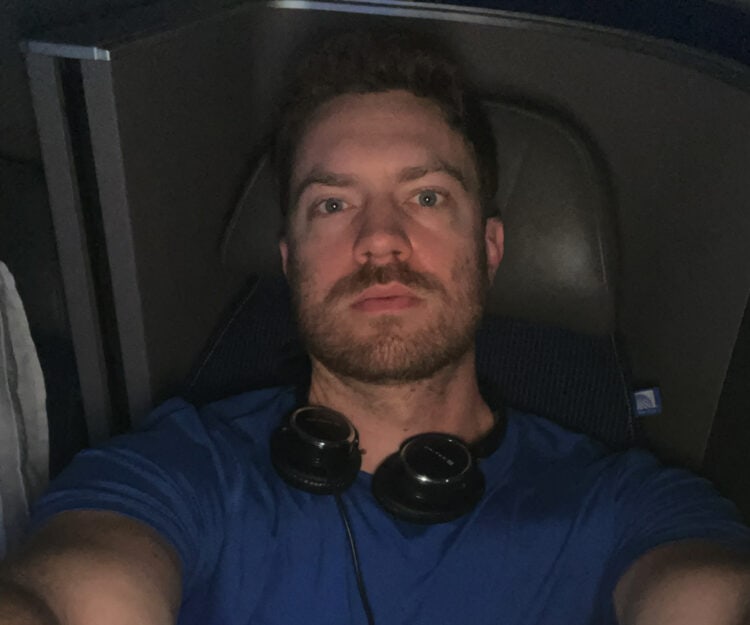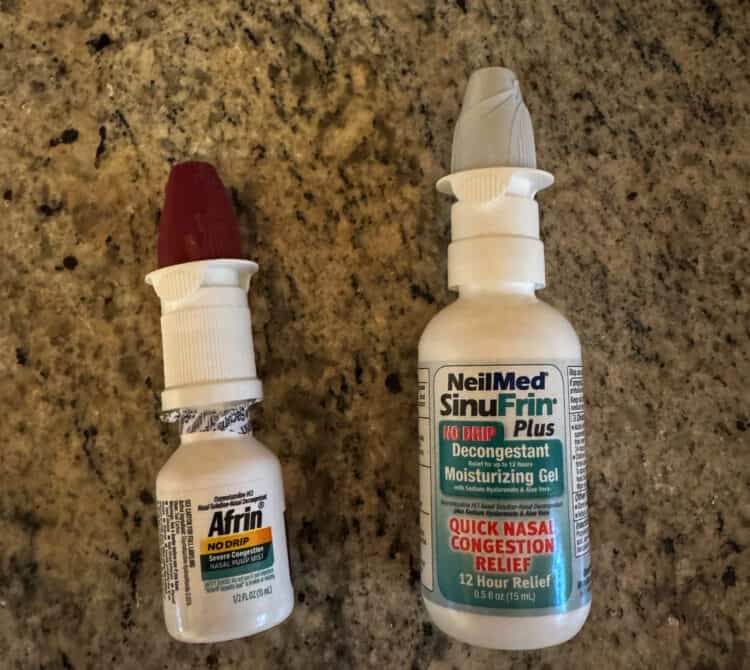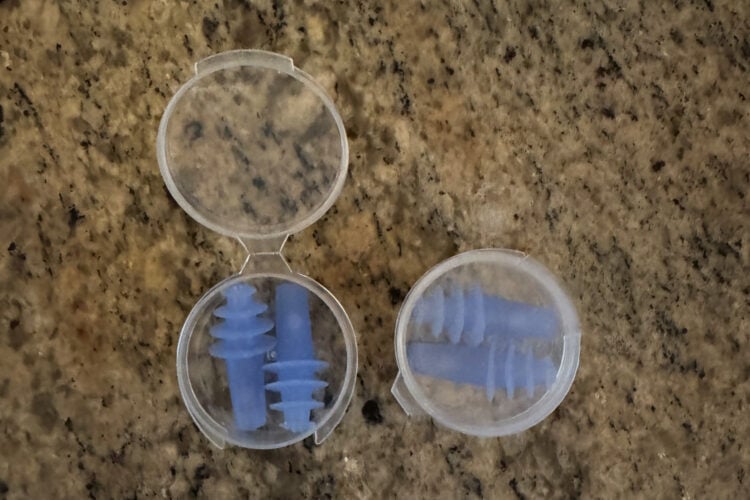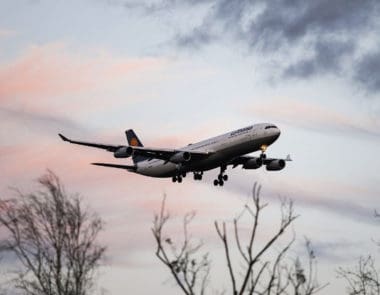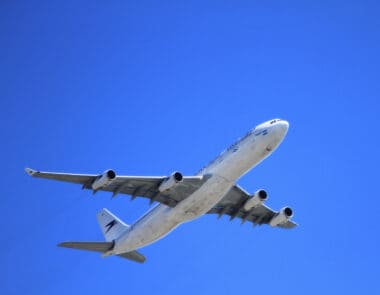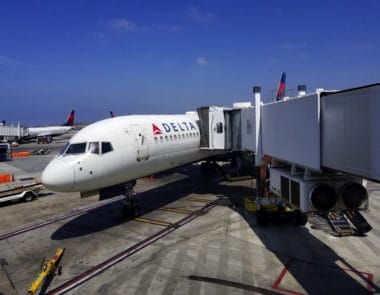How to Pop Your Ears on an Airplane and Avoid Barotrauma Pain While Flying
Disclaimer – I am not a doctor, and this is not medical advice, but I personally suffer from ear pain and barotrauma when flying. My recommendations come from helpful things that my ENT recommended.
While I love flying, it is often a physically painful experience for me. Like many other people, I suffer from Eustachian Tube Dysfunction (ETD), which leads to barotrauma. This happens when there is a pressure difference between your middle ear and the outside of your eardrum.
For me, the pain starts during the airplane’s descent. If my ears pop, the pain goes away. If they do not, the pain continues, and I often have trouble hearing for the next few days.
The good news is I have a great ear, nose, and throat doctor (ENT) who has given me numerous tips. Here are things that work for me.
Table of Contents
Ways to Prevent Ear Pain & Barotrauma When Flying
Photo: Phil Dengler of The Vacationer – I experienced severe ear pain and barotrauma on a recent flight to South Africa. Unfortunately, I did not take my oral decongestant (Sudafed) or my nasal spray (Afrin). Additionally, pinching my nose and breathing out did not help, so I had trouble hearing for a few days after.
The key to preventing barotrauma is to attack it in multiple ways. I recommend doing as many of these things as possible before your next flight.
Take a Decongestant with Pseudoephedrine (Very Effective)
Being sick and congested is a recipe for disaster if you are susceptible to barotrauma. If your congestion is severe, reschedule your flight if possible. If it is mild to moderate, I highly recommend taking a decongestant with pseudoephedrine, starting a few days before flying and the day of.
My ENT recommended Sudafed with Pseudoephedrine HCI instead of Phenylephrine HCl-based products because Pseudoephedrine HCI has been shown to be much more effective. While it is available over the counter, you’ll have to ask your pharmacist for it and show your ID. Here are your options for Sudafed with Pseudoephedrine HCI.
- SUDAFED® Sinus Congestion Relief Maximum Strength Decongestant Tablets
- SUDAFED® Sinus Congestion 12 Hour Relief Maximum Strength Decongestant Caplets
- SUDAFED® Sinus Congestion 24 Hour Relief Maximum Strength Decongestant Tablets (I use this)
- SUDAFED® Sinus 12 Hour Pressure + Pain Relief Decongestant Caplets
I use the 24 Hour Relief Maximum Strength Decongestant Tablets since it is only one pill per day, but the others should be as effective when properly taken. Avoid Sudafed PE products since they contain Phenylephrine HCl instead of the more effective Pseudoephedrine HCI.
Take a Nasal Spray with Oxymetazoline Hydrochloride (Very Effective)
Photo: Phil Dengler of The Vacationer – Two nasal sprays I use to prevent ear pain when flying. The first is Afrin for Severe Congestion. The second is NeilMed SinuFrin Plus. Both contain the same ingredient, Oxymetazoline hydrochloride 0.05%, so buy whichever one is cheaper.
In addition to Sudafed, I also use Afrin Nasal Spray the day before and the day of my flight. While other brands are fine, ensure the active ingredient is Oxymetazoline Hydrochloride. Like the Sudafed, Afrin quickly clears congestion, which is a major cause of barotrauma. Here are a few things to know.
- Spray 2-3 pumps in each nostril (I always do 3)
- Start the morning before your flight and use it again before bed (or 12 hours later)
- On the day of my flight, I usually take it on the plane before takeoff.
- Effects last for 12 hours. For really long flights, make sure you take a dosage within 12 hours of landing.
- The active ingredient, Oxymetazoline Hydrochloride, can be addictive and cause rebound congestion. Do not use Afrin for more than a few days.
Per my ENT, it is fine to take Sudafed and Afrin simultaneously. Regardless, ask your doctor before combining the two medications.
Use EarPlanes Earplugs (Somewhat Effective)
Photo: Phil Dengler of The Vacationer – Two new pairs of EarPlanes for my upcoming flights. I usually wear each pair three to four times before moving to a fresh pair.
I have been using EarPlanes for years. Unfortunately, they used to work better for me than they do now.
- They are designed to protect the middle ear from pressure changes when flying.
- I put them in one hour before landing (put them in before takeoff if you have issues on the ascent).
- There is now an app that tells you when to put them in (I have not used it yet).
- They cost around $10 and are found at most drugstores.
- You must insert them properly for them to work. There are clear instructions on the box
While I still use EarPlanes, I have issues if I do nothing else. For example, I had severe congestion on a recent flight from Philadelphia to Dallas. Before flying, I did not take Sudafed or Afrin, and I only used a fresh pair of EarPlanes.
Despite inserting them properly well before the descent, I got the worst ear pain of my life. Additionally, my ears would not pop, and I could barely hear for two weeks after. I had to get antibiotics and steroids from my ENT to clear the fluid from my ears, which was not fun.
How to Pop Your Ears When Flying When Pain Starts and Pressure Builds
Unfortunately, sometimes, my recommended prevention methods do not work. If your ears start hurting and you can feel pressure mounting, here is how to open your eustachian tubes.
The Valsalva Maneuver – Pinch Your Nose and Gently Breath Out (Very Effective)
This is the most effective method to pop your ears, but you must be careful.
- Pinch your nose, hold your breath, and slowly breathe out of your nose for around 15 seconds.
- Repeat the process every minute or so if you do not feel a pop.
- Do not blow hard. Doing so could damage your eardrum and make things worse.
- This works much better in a steaming hot shower or sauna. Obviously, those are not available on most flights.
I would say pinching my nose and gently blowing out works 75 percent of the time. When it fails on the plane, I will take a steaming hot shower after landing and do it again. The steam from the shower helps open the sinuses and makes it more effective.
Other Self Care Methods Like Chewing Gum, Drinking Water, and Yawning
Some people swear that chewing gum prevents or treats ear issues when flying. Here is my take on it and other common recommendations.
- Chewing gum has never helped my ears pop when they are already messed up. However, chewing gum may have helped prevent barotrauma.
- Like chewing gum, drinking water and swallowing have not helped me.
- Real yawns have popped my ears when experiencing barotrauma. Unfortunately, fake yawns do very little.
Implications of Barotrauma and Ear Pain While Flying
Unfortunately, barotrauma can last long after the flight is over.
- Most cases resolve within 24-48 hours after the flight.
- Severe cases can last for weeks (see an ENT if it lasts more than a few days)
- Permanent hearing loss and/or tinnitus is rare, but it can happen
- Your eardrum can rupture. Not to scare anyone, but my ENT suffers from barotrauma and has experienced ruptured eardrums on multiple occasions!
The Vacationer’s Final Thoughts
Barotrauma is awful to experience, but I refuse to let it stop me from flying. Before your next flight, take Sudafed with Pseudoephedrine HCI and Afrin nasal spray starting a few days before takeoff and on the day itself. Consider using EarPlanes earplugs to further better your odds. If you still experience ear pain, pinch your nose and slowly breath out (if it persists after the flight, do this in a hot, steamy shower). Finally, see a doctor if your symptoms last more than a few days.
Featured Image – Phil Dengler of The Vacationer – Inside the cabin of a recent United Polaris business class flight from Newark to South Africa. Unfortunately, I experienced severe air pain during the descent.
Get The Vacationer Newsletter
Get highlights of the most important news delivered to your email inbox

